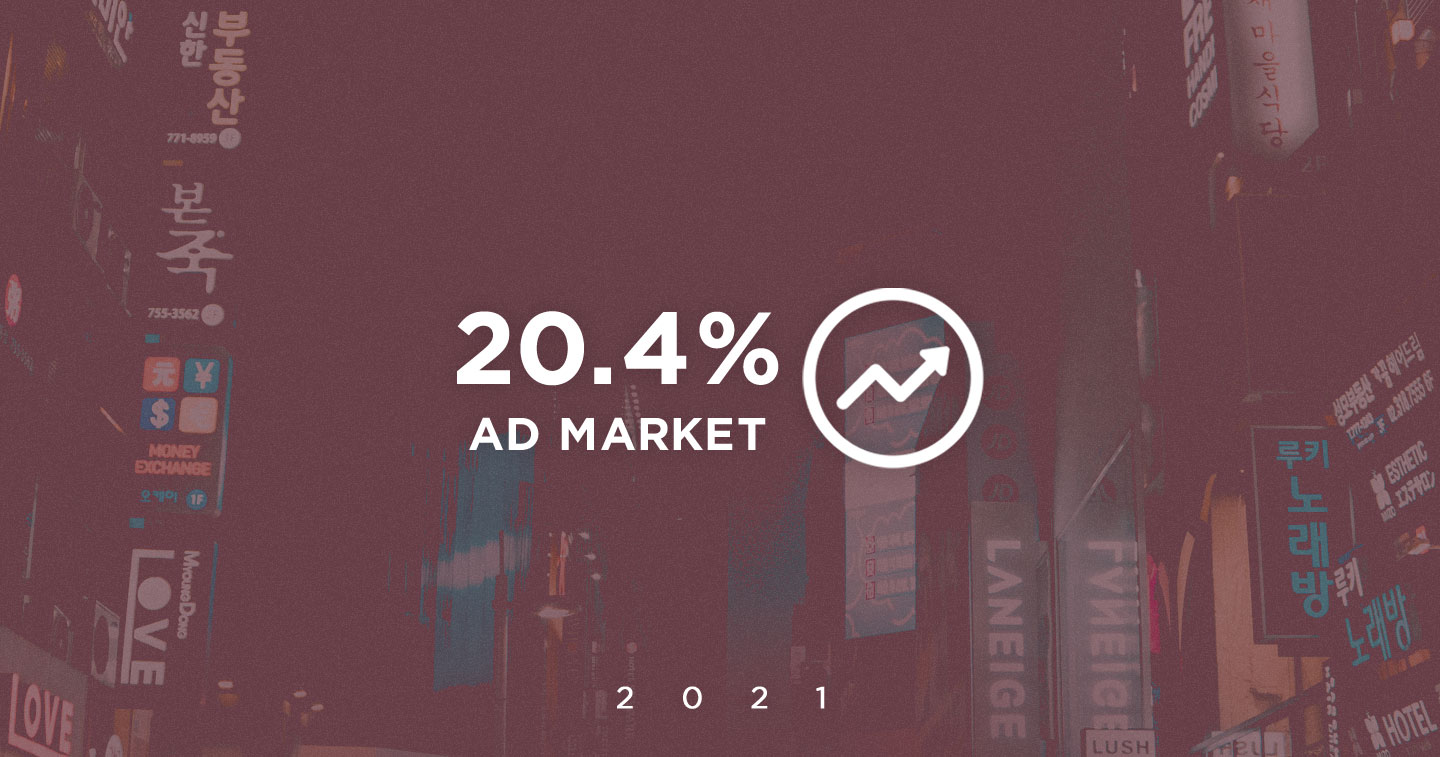SEOUL, SOUTH KOREA — Cheil Worldwide today announced that total spending on advertisements in South Korea in 2021 was KRW 13.98 trillion, marking a 20.4% increase over the previous year.
This is the highest growth rate ever since Cheil Worldwide began aggregating total spending on advertisements in 1973, and it can be deduced that the market has achieved such high growth as a result of the swift transformation to digital in the COVID-19 era.
In fact, the digital segment grew by 31.5% last year, surpassing KRW 7 trillion for the first time in history. Digital’s share of the total market took the majority for the first time, recording 53.7%.
Digital was not alone, with growth seen across all key segments, including broadcast, print, and OOH (outdoor ads). It is the first time in 10 years that all four segments experienced growth simultaneously.
Digital
The size of the digital segment, which played a leading role in the growth of South Korea’s overall advertising market last year, was estimated at KRW 7.51 trillion. Search ads grew by 24.1%, reaching KRW 3.61 trillion through the expansion of shopping search ads by e-commerce companies as well as small and medium-sized advertisers. Exposure ads also grew rapidly by 39.3%, reaching KRW 3.89 trillion due to increased time spent on video platforms such as YouTube, while display ads, which have real-time bidding and use detailed targeting, was the preferred method for many small and medium-sized advertisers.
Broadcast and print
Broadcast spending grew by 13.4%, recovering to move back above the KRW 4 trillion mark for the first time in five years. The terrestrial TV advertising market grew by 17.6%, reaching KRW 1.36 trillion last year due to deregulation, which included the implementation of commercial break spots for the first time in 48 years. Cable TV (including comprehensive programming channels) saw growth of 13.7% thanks to the success of TV dramas and golf entertainment programs on cable channels and various entertainment shows on comprehensive programming channels.
In the print segment, spending on newspaper ads increased by 2%, reaching KRW 1.41 trillion, while spending on magazine ads increased by 2.8% to reach KRW 243.9 billion, for a total of KRW 1.66 trillion.
OOH (Out of Home)
Spending on OOH grew by 7.9%, reaching KRW 816.1 billion. With the strong performance of new digital outdoor technologies (DOOH), such as vertical electronic boards and steady responses from media like apartment LCDs, OOH overall grew by 14.9% to KRW 388 billion, marking a recovery to pre-COVID-19 level spending on OOH. Transportation advertising grew by 9.6%, recording KRW 392.6 billion thanks to the growth in spending on buses and subways. Theaters, however, continued to struggle with spending dropping by 41% to KRW 35.5 billion due to social distancing and quarantine guidelines.
2022 Outlook in South Korea
While the Organization for Economic Cooperation and Development (OECD) and the International Monetary Fund (IMF) forecast 3% economic growth for South Korea this year, the advertising market is expected to grow by 9.3% to reach KRW 15.28 trillion in 2022.
The double-digit growth in the digital space is expected to continue this year as search and exposure ads grow along with the expansion of performance marketing and intensified competition among commerce companies.
Additionally, broadcast ad market is expected to continue to grow amid favorable conditions and various factors such as this year’s Winter Olympics, South Korea’s presidential elections, and the upcoming World Cup. OOH, which underwent a slow recovery following the COVID-19 pandemic, is also expected to grow in the 10% range thanks to South Korea’s recent embrace of the “With COVID-19” era and the acceleration of the media’s digital transformation.








